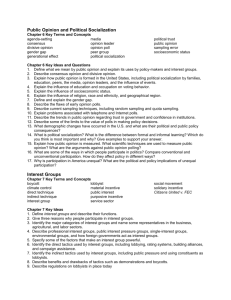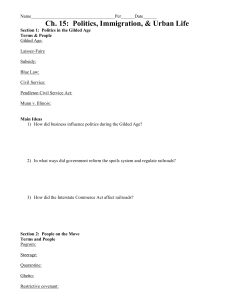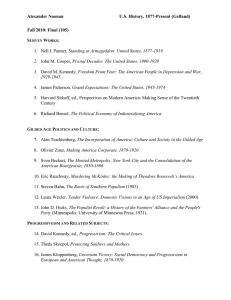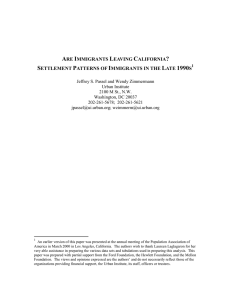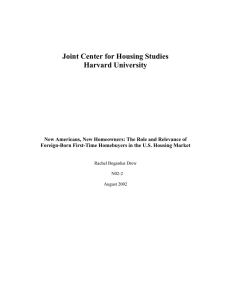public opinion and political action
advertisement
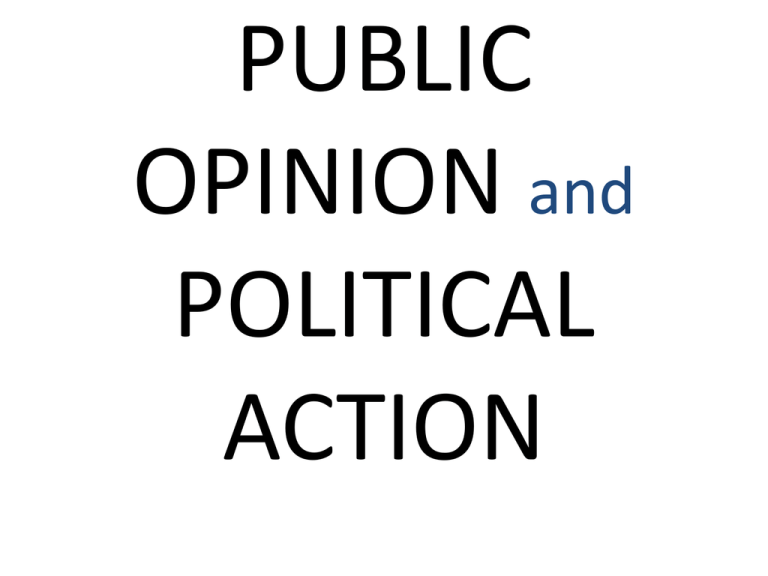
PUBLIC OPINION and POLITICAL ACTION PUBLIC OPINION • The distribution of the population’s beliefs about politics and political issues DEMOGRAPHY • The study of human populations and population changes • Census as primary tool U.S. Population Distribution by Race and Ethnicity (2010) White 72.4 % Hispanic/Latino 16.4% African American 12.6 % Asian American 4.8 % American Indian/Alaska Native 0.9 % Native Hawaiian/other Pacific Islander 0.2 % Some other race 6.2 % Two or more races 2.9 % Immigration • Federal law allows for ~ 1 million new immigrants per year • Currently ~ 12% of population are immigrants – 41% of this group are citizens – 27% in CA are foreign-born (high) – 1% in WVa are foreign-born The 3 ‘Great Waves’ of Immigration • 1800-1850: “Old Immigrants” NW Europeans • 1880-1920: “New Immigrants” SE Europeans • 1960-Present: Hispanic/Latinos, Asians Melting Pot vs. Salad Bowl theories Minority Majority • 2008: Non-Hispanic white Americans = 66% Political Culture • An overall set of values widely shared throughout a society • e.g. Equality Other Demographic Changes • Geographic population shift > political changes – Reapportionment • “Graying of America” Political Socialization • Process through which an individual acquires their particular political orientations (knowledge, feelings, and evaluations) – Family – Mass Media – School Measuring Public Opinion • Public Opinion Polling first developed by George Gallup • Sample: relatively small proportion to represent the whole – 1,000 to 1,500 can accurately represent the whole – Random Sampling key: everyone should have equal probability of being chosen; sample should be roughly equal to demography Poll Legitimacy • Level of confidence = Sampling Error • Typical SE = +/- 3% – This means that 95% of the time the results are within 3% of what the entire population thinks/feels. Sampling Techniques • Random-Digit dialing: to reach listed, unlisted • ~2% of population doesn’t have phones • People less willing to participate over the phone • 2010: 1 in 4 households had cell phones only • [federal law prohibits use of automated dialers for cell numbers – so these must be done ‘by hand’] Exit Polls • Voting places selected at random • Workers ask every 10th person how they voted • Used to project electoral winners Criticism of Polls • Sample size • Sample constituency • Wording of questions “Paradox of Mass Politics” • Posited by Russell Neuman • Paradox: That American politics works as well as it does given the lack of public knowledge about politics – [2006: 74% of Americans could name the 3 Stooges … 42% could name the 3 Branches of government] Decline in Trust in Government • Beginning in the late 1960s, the public’s trust in government has fallen • Vietnam, Watergate, Economic crisis of 1970s, Iran hostage crisis, Hurricane Katrina • Greatest impact of this loss of trust is upon social welfare programs … “People need to trust the government when they pay the costs but do not receive the benefits, which is exactly what antipoverty and race-targeted programs require of most Americans” • Mark Hetherington • Declining trust in government has led to increasing belief that government solutions to social problems are wasteful and impractical, thereby draining public support for them – E.g. Health Care Reform But … the Mortgage Interest Tax Deduction … Or … • 83 percent of stocks are owned by one percent of the population. • Sales taxes, which disproportionately hit lowincome families, are in force across the nation. Taxes on financial transactions, which would disproportionately affect the rich, barely exist. • This tax would raise $14.4 billion a year, enough to handle New York’s fiscal deficit, with $4.4 billion leftover. Or … • The average effective tax rate for citizens (local, state, and federal) is ~40% • The effective tax rate for corporations is ~ 16% Political Ideology • A coherent set of beliefs about politics, public policy, and public purpose … which helps give meaning to political events Liberals vs. Conservatives As A General Rule, How Do they Feel About … • • • • • Change? Role of Government? Equality? Economics? Social Policy? Political Participation • Conventional: – Voting – Working to persuade others – Running for office/working in campaigns • Unconventional: – Protest – Civil Disobedience – Violence

